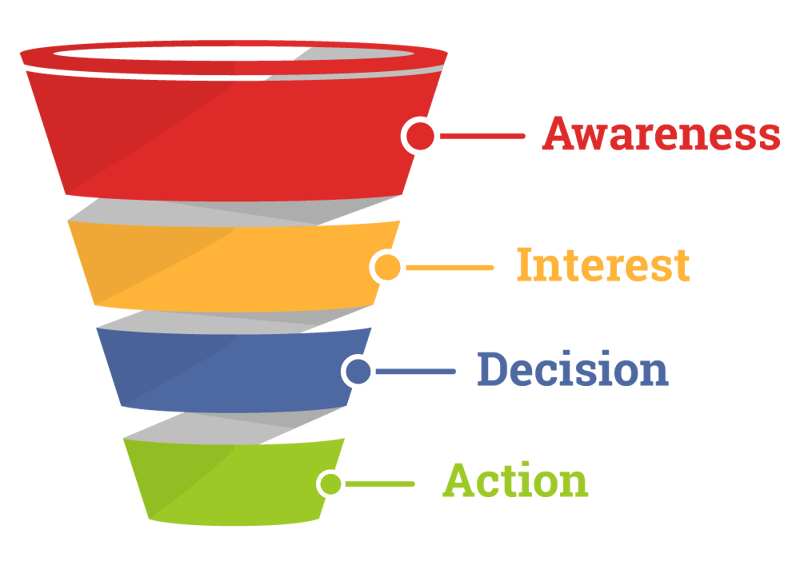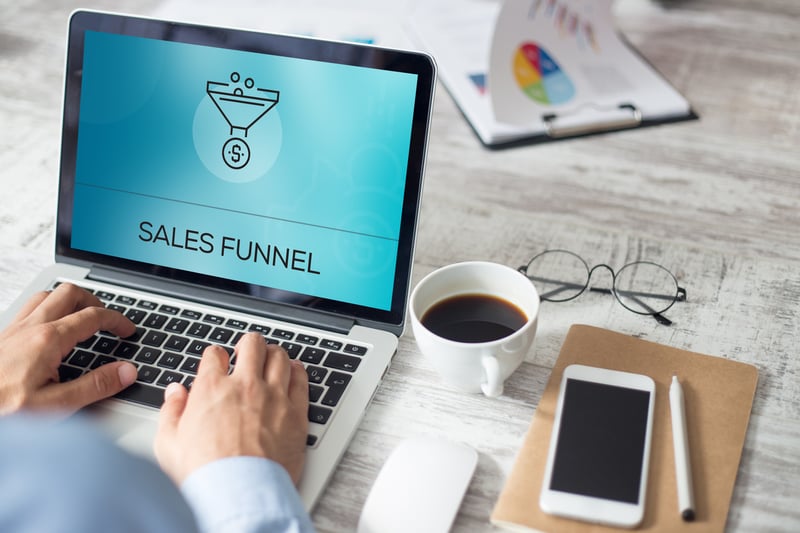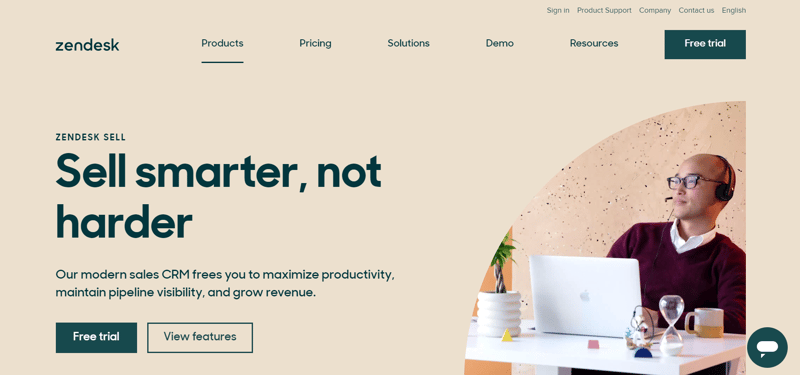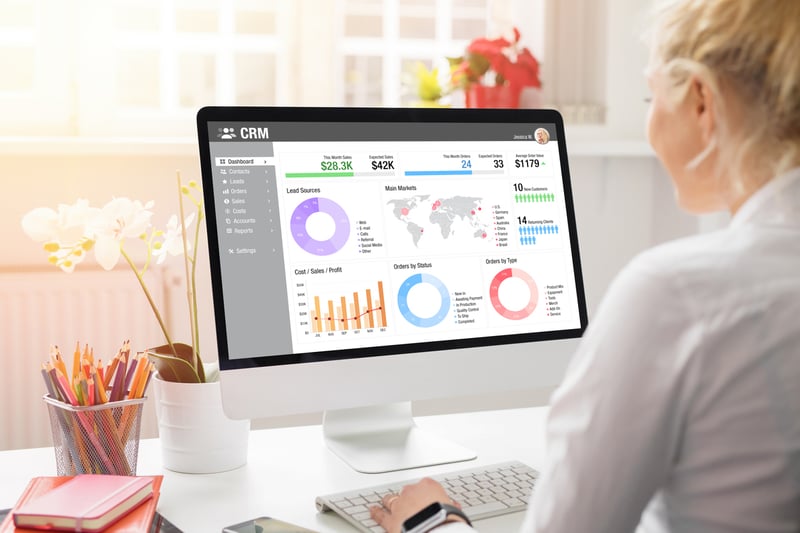
Top 3 Sales Funnel Management Software [2026 Edition]
 Updated on
Updated on
 By Carlos Correa
By Carlos Correa
Carlos Correa
Carlos has been involved in the sales space for well over ten years. He began in the insurance space as an individual sales agent, managing teams as s...
learn more
Carlos Correa
Carlos has been involved in the sales space for well over ten years. He began in the insurance space as an individual sales agent, managing teams as s...
Table of Contents
Table of Contents
Let's get this straight.
Achieving your sales goals is about more than building a sales funnel.
Knowing terms like the top, middle, and bottom of the funnel without implementing them the right way makes your sales process more complex and closing deals all but impossible.
If building a sales funnel is the only thing you need to do, then why is it that 79% of marketing leads are never converted into sales?
Monitoring your sales funnel helps you track your prospects' behaviors as they interact with your business and go through the stages of the buyer's journey.
Knowing their behaviors enable you to spot and repeat patterns that drive your prospects towards closed deals.
This article discusses the meaning of sales funnel management, the importance of implementing this process, and a breakdown of the funnel management process.
P.S. If you already know all of this, you can skip to our list of top sales funnel management software to optimize your sales process and increase your revenue.
What Is Sales Funnel Management?
Sales funnel management helps you organize, track, and analyze interactions with your prospects along their journey through each stage in your funnel. These interactions include initial sales calls, email campaigns, and phone calls, which lead to closing a deal. Monitoring customer engagement as they move through your sales funnel helps you pinpoint areas that motivate your prospects to close.
A sales funnel is a visual representation of the stages people go through as they engage with your business, from being prospects to being customers.
The stages of a sales funnel are:

In brief:
- Awareness: people first hear about your product or service
- Interest: prospects evaluate what you offer and compare it with your competitors
- Decision: potential customers go deeper – they look at your pricing, package options, etc.
- Action: prospects either make a purchase or not
Funnel management involves closely tracking customers at each of these stages. This allows you to gauge their interest and help push them in the right direction – making a purchase.
It also helps you categorize and prioritize leads. If prospects don't seem likely to end up making a purchase, you can put them on the back burner and focus your attention on those who are more likely to become customers.
Why Is Funnel Management Important?
If you've ever tried to manage a sales funnel without the right systems in place, you know it can feel like juggling multiple things while riding a unicycle, exciting, but one wrong move and things crash.
Funnel management is all about keeping every stage of the buyer journey smooth, predictable, and measurable.
Let's break it down.
1. Fragmented Buyer Journeys Require Consistent, Real-Time Communication
The modern buyer doesn't move neatly from awareness to decision. Instead, they bounce between Google searches, LinkedIn posts, webinars, and even TikTok videos before they finally decide to click "buy." That means lead funnel management has to go beyond one-dimensional outreach.
Here's why:
- Consistency Matters: 80% of consumers say the experience a company provides is as important as its products. If your communication isn't consistent, your funnel springs leaks.
- Real-Time Engagement Wins: Prospects expect answers fast. Waiting 24 hours to respond feels like 1999 in internet time. Funnel management ensures you're aligned with this urgency at every touchpoint.
2. SMS Helps Bridge Timing Gaps With Immediate Delivery and 2-Way Engagement
Email is great, but let's be honest. Your prospect probably has 74 unread newsletters sitting in their inbox. Text messages, on the other hand, have a 98% open rate and usually get read within three minutes. That's practically instant access to your lead's attention.
With smart sales funnel management, SMS becomes your secret weapon:
- Close The Gap: Instant delivery means your leads hear from you exactly when it matters, whether it's confirming a demo or nudging them to complete a signup.
- Create Conversations: Unlike email blasts, SMS is naturally two-way. That means you can answer objections, confirm availability, or just remind them you're human in real time.
3. AI and Automation Now Allow Scalable Personalization
Here's where things get futuristic. Traditional funnel management required a lot of manual chasing, like sales reps sending the same templated emails to hundreds of leads. But with AI and automation, personalization finally scales.
Here's how:
- Smart Timing: AI can detect when a lead is most likely to respond and send the right message at the right moment.
- Personal Touches at Scale: Automation lets you drop in details like name, company, and behavior triggers without writing every message from scratch.
- Predictive Insights: Instead of guessing which leads are worth your time, AI-driven funnel management scores and prioritizes them automatically.
In short, understanding what is sales funnel management today means recognizing it's no longer just about moving leads from one stage to another. It's about weaving together real-time communication, SMS engagement, and AI-driven personalization to create a funnel that feels less like a rigid pipeline and more like a dynamic, lead-friendly journey.
Funnel Management Process Explained

Now that we've covered why funnel management matters, let's get into the how. The funnel management process requires structure, intention, and a touch of automation magic.
Here's how to bring sales funnel management to life step by step.
Step 1: Map Your Sales Funnel Stages
Before you start firing off texts or automating sequences, you need a clear map of your sales funnel. This is where most teams stumble, and if you can't define your stages, you can't manage them.
- Define Each Stage Clearly: Awareness, interest, decision, action. What do these actually look like in your business? For example, a booked demo might mark the "consideration" stage, while a signed contract moves a lead into "purchase."
Let's quickly revisit the sales funnel stages:
|
Sales funnel stage |
Overview |
|
Awareness |
|
|
Interest |
|
|
Decision |
|
|
Action |
|
- Segment Contacts in Your CRM: Once stages are clear, tag and group your leads accordingly. Proper lead funnel management means no one gets lost in a generic "prospect" bucket.
This mapping exercise is the backbone of the funnel. Without it, funnel management meaning gets fuzzy, and your pipeline becomes more chaos than strategy.
Step 2: Integrate SMS Touchpoints
Here's where things get interesting. While email and calls have their place, SMS often outshines them when timing is critical. Here's how to integrate SMS touchpoints:
- Pinpoint Where Sms Wins: Use it for no-show reminders, demo confirmations, quick check-ins, or post-event follow-ups.
- Keep It Human: Short, conversational messages perform better than robotic blasts. Funnel management is about guiding, not spamming your leads.
When done right, SMS feels less like marketing and more like an ongoing conversation.
Step 3: Automate Follow-Ups and Sequences
No sales rep has time to manually text every prospect at just the right moment. That's where automation shines. Tools like Ringy make it easy to set up sequences that do the heavy lifting.
- Drip Texts at Scale: Build workflows that nudge leads automatically without overwhelming them.
- Personalization Matters: Use merge fields (like first name or company) and behavior triggers (like clicking a link) to keep messages relevant.
Smart sales funnel management balances automation with authenticity. Leads should never feel like they're talking to a bot, even if the workflow is running behind the scenes.
Step 4: Monitor Funnel KPIs
Managing a funnel without metrics is like driving blindfolded. You're moving, but you have no idea where you'll end up. Funnel management thrives on data.
Track SMS-specific performance:
- Open rates
- Response rates
- Click-throughs
- Conversion rates
And don't forget funnel-specific KPIs:
- Stage progression rate (how smoothly leads move forward)
- Time-in-stage (where bottlenecks happen)
- Close ratio (the percentage of leads that actually buy)
Numbers tell the truth. They'll show you where your funnel shines and where it leaks.
Step 5: Optimize with AI and Feedback Loops
Here's the fun part: improving as you go. The best funnels aren't static. They evolve with feedback and smarter tech.
- Leverage AI Tools: Generative AI (like Ringy's suggested replies) helps fine-tune messaging on the fly.
- Build Feedback Loops: Feed performance data back into your CRM and workflows so your funnel improves automatically over time.
The result? A funnel that doesn't just capture leads but actively adapts to how real buyers behave. That's what true sales funnel management looks like in today's landscape.
Top 3 Sales Funnel Management Software
Managing your sales funnel efficiently can be mind-boggling due to the sheer amount of metrics that need to be monitored and the difficulties involved with implementing the right strategy at the right stage.
But armed with the following software tools, you can easily automate processes, get detailed reports on lead conversion, and improve your sales strategy at each stage.
We know you want to get the best bang for your buck, so here's an overview of the top sales funnel management software and their pricing.
|
Sales Funnel Management Software |
Pricing |
|
Ringy |
|
|
Zendesk Sell |
Starts at $19 per user per month, billed annually |
|
Systeme |
$17-$97 per month, with a free plan |
1. Ringy

Yes, we've included ourselves on the list because we believe we offer the best solution to your sales funnel management woes.
Right off the bat, here's what we bring to the table…or funnel:
- Automated data entry for emails and SMS
- Contact management, including segmentation for targeting
- Drip campaigns
- Insights and reports on campaigns
- Automate communication with prospects, and customers
Drip campaigns are especially useful for funnel management since it enables you to engage your leads across all the stages of your sales funnel. Plus, with automatic messages, Ringy ensures that your cold leads are nurtured while you focus on selling.
Our clients can tell you how we've helped them with their sales funnel – see what they have to say.
But why not see for yourself and take a more comprehensive look at our features?
The best part? Our pricing is straightforward – $109 per month.
*Pricing accurate as of August 2026*
2. Zendesk Sell

From its sales dashboard and analytics tools to lead organization with custom fields, Zendesk Sell provides complete funnel visibility for your sales reps.
Zendesk Sell lets you quickly build flow fields to track prospects from lead to customer and track sales campaign results.
This is particularly helpful since new sales reps can find it confusing to add new leads because of some set fields you can't use or delete.
Pricing starts at $19 per user per month, billed annually.
*Pricing accurate as of August 2026*
3. Systeme

Systeme's freemium plan offers impressive features, including landing page creation and email templates. It is perfect for sales teams that want to try out lead funnel management without spending a dime.
Systeme also offers:
- Contact management from 2,000 to unlimited contacts
- Build and manage an unlimited number of sales funnels
- Implement automation to streamline sales funnel workflows
While this software is excellent for small businesses getting started, the landing page forms can be generic and lacking in customization.
Systeme costs $17-$97 per month, with a free plan available.
*Pricing accurate as of August 2026*
Wrapping up

Sales funnel management helps you:
- Streamline how your prospects move through each stage of the customer journey
- Thoughtfully implement strategies to increase conversion rates
You should also leverage software tools to make sales funnel management even more efficient and effective.
With Ringy's automation features, detailed reporting, and contact management, you can easily maintain both a bird's eye view and an in-depth analysis of your sales funnel.
Request a demo, and let's get started.

Skyrocket your sales with the CRM that does it all.
Calling? Check. SMS? Check. Automation and AI? Check. Effortlessly keep in touch with your customers and boost your revenue without limits.

Take your sales to new heights with Ringy.
Sales in a slump? Ringy gives you the tools and flexibility you need to capture leads, engage with them, and turn them into customers.
Subscribe to Our Blog
Enter your email to get the latest updates sent straight to your inbox!
Categories
Related Articles




































































































